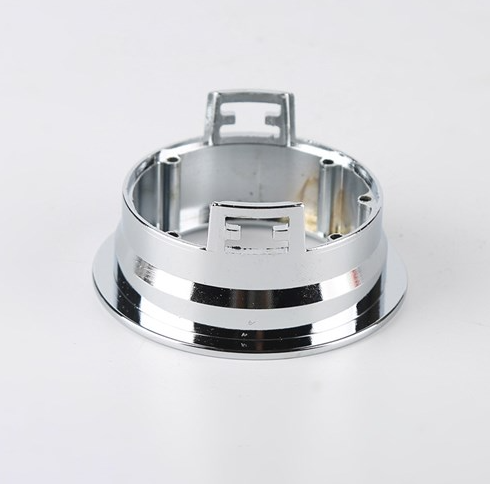Drilling Process For Aluminum Alloy Die Casting – Grid Drilling Guide
Drilling is to use a certain torque to screw the tap into the bottom hole to be drilled to process the internal thread. In this guide, we’ll talk about the drilling technology for aluminum die casting.

Tips For Drilling Process In Aluminum Die Casting
(1) The orifice of threaded bottom hole on aluminum alloy die casting shall be chamfered, and both ends of through hole thread shall be chamfered.
(2) The position of the casting clamp shall be correct, and the center line of the threaded hole shall be placed in the horizontal or vertical position as far as possible, so that it is easy to judge whether the tap axis is perpendicular to the plane of the workpiece.
(3) At the beginning of drilling, try to put the tap right, then apply pressure to the tap and turn the winch. When cutting in for 1-2 turns, carefully check and correct the position of the tap. Generally, when cutting 3-4 turns of thread, the tap position shall be correct. In the future, only turn the winch and do not put pressure on the tap, otherwise the thread profile will be damaged.
(4) When drilling, turn the winch about 1/2-1 turn every 1/2-1 turn, so that the chips can be easily discharged after breaking, and the phenomenon of tap rolling caused by chip sticking on the cutting edge can be reduced.
(5) When encountering a screw hole that cannot be tapped, always exit the tap to remove the chips in the hole.
(6) When replacing the latter tap during drilling, screw it into the tapped thread by hand until it can no longer be screwed in, and then turn it with a winch. When the final cone is finished and withdrawn, it is also necessary to avoid rotating the winch quickly, and it is best to screw it out by hand to ensure that the quality of the tapped thread is not affected.
(7) During machine tapping, the tap and screw hole shall be coaxial.
(8) During machine tapping, the calibrated part of the tap cannot be out of the head, otherwise it will produce disordered teeth when the tap is pulled out in reverse.
(9) The cutting speed during machine tapping is generally 6-15m / min for steel; 5-10m / min for Quenched and tempered steel or hard steel; 2-7m / min for stainless steel; Cast iron is 8-10m / min. For the same material, the smaller the tap diameter, the higher the value, and the larger the tap diameter, the lower the value.
Rigid Drilling
Also known as “synchronous feed drilling”. The rigid drilling cycle synchronizes the spindle rotation with the feed to match the specific thread pitch needs. Since the feed into the hole is synchronized, in theory, an integral tap clamp with any tension compression cannot be used.
However, in actual production, the problem is that the machine tool can not accurately match the specific tap pitch being used. There is always a slight difference between the thread processed by the machine tool and the actual pitch of the tap. If an integral tap clamp is used, this difference has a decisive impact on the tap life and thread quality, because additional axial force is applied to the tap.
If a tap clamp with tension compression floating is used, the tap life and thread quality will be greatly improved because these additional axial forces on the tap are eliminated. The problem with traditional tension compression tap clamps is that they will cause great changes in drilling depth. As the tap becomes blunt, the pressure required to start the tap into the hole increases, and the compression stroke used in the tap driver is greater before the tap starts cutting. The result was a shallow borehole depth.
One of the main advantages of rigid drilling is that the depth can be accurately controlled in blind hole machining. In order to process the workpiece accurately and consistently, it is necessary to use a tap clamp with sufficient compensation to achieve a higher tap life without causing any change in depth control.
Professional lubricant is also needed in drilling process, which can effectively reduce the friction between workpiece and screw tap, reduce wear, have strong oil film, prevent scratch and wrinkle on workpiece surface, and effectively improve work quality and work efficiency. At the same time, it can inhibit the temperature rise, reduce the sintering and bite, prolong the service life of the die, protect the tools, inhibit the generation of black sludge and do not corrode the workpiece; Excellent cooling effect.
It is very important to select a suitable lubricant in drilling. When cleaning is not required, self-cleaning drilling lubricant shall be used. For difficult workpiece, pure oily drilling oil shall be used.

